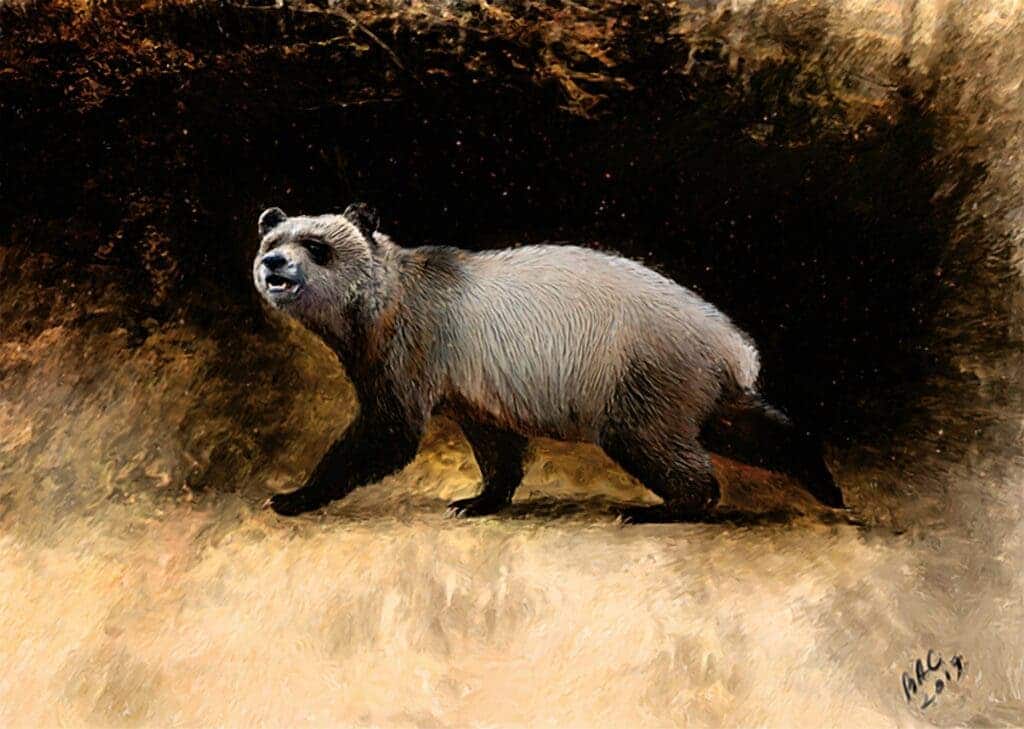In 1970, paleontologist Ivan Nikolov came across two teeth fossils in northwestern Bulgaria. The fossils didn’t hint at a creature you’d expect to find in Bulgaria nowadays — but rather, at a modern giant panda-like species. He sent the fossils to Bulgaria’s National Museum of Natural History for preservation, where they were largely abandoned. Now after more than 50 years, a team of researchers has finally confirmed that the teeth fossils belong to the last species of European panda.

The researchers suggest that the newly discovered panda species inhabited the humid and swampy forests of Bulgaria about six million years ago. They were close relatives to the modern giant pandas (Ailuropoda melanoleuca) found in China. The researchers have decided to name the new Balkan panda species Agriarctos nikolovi In the honor of Ivan Nikolov, who first found the fossils. Fossil evidence suggests that A. nikolovi was the most modern species of panda that ever existed in Europe.
Modern panda vs Agriarctos nikolovi
Currently, there are only 1,864 pandas left in the world and all the members belonging to this vulnerable black and white species of bears are endemic to China. Surprisingly, the pandas that you see in American and European Zoos are also owned by the Chinese government. China uses pandas as tools of diplomacy and leases them to other nations to strengthen its foreign relations — while maintaining ownership of them.
According to the lease agreement, if a mother panda from China gives birth to a baby panda on foreign soil, the newborn panda will still be considered the property of the Chinese government. However, paleontological data suggest that pandas were not always native to China. The lead author of the study and professor at the National Museum of Natural History in Sofia city, Nikolai Spassov suggests that it is possible the oldest group of giant panda bears lived in Europe and then later migrated to China.

He found a blackened hue in the teeth of A. nikolovi suggesting that the members of this panda species lived in the forested wetlands of Bulgaria (Europe). While further explaining the lineage of pandas, Professor Spassov told ZME Science:
“Today’s giant panda is a highly specialized species of bear that feeds on bamboo and inhabits a small mountainous area in China. It is assumed that its direct ancestor is the fossil giant panda Ailurarctos liufengensis, which lived in China 8-7 million years ago. The most ancient and primitive pandas in their features were found, however, in Europe (Spain, Hungary, France, Germany) and the age of different species is estimated at 12-7 million years.”
While modern pandas eat only bamboo, the study of fossil teeth suggests that A. nikolovi fed on less hard plants. However, its teeth were proportionally larger in size and provided good protection against contemporary carnivore animals. The researchers believe that A. nikolovi adopted a vegetarian diet due to the competition it faced from other carnivores. This also explains why the modern giant panda also lives only on a vegetarian diet, despite having a digestive system that was also suitable for meat consumption.
“The likely competition with other species, especially carnivores and presumably other bears, explains the closer food specialization of giant pandas to vegetable food in humid forest conditions,” wrote Professor Spassov in his study.
How did Europe lose its last panda species?
The researchers believe that natural climate change events in southern Europe led to the extinction of A. nikolovi. About 5.96 million years ago, during the end of the Miocene era, the Mediterranean sea was hit by the Messinian salinity crisis, a geological event that led to the aridification of the sea. This event started turning the swamps into drylands and made them unsuitable for A. nikolovi.

The teeth fossils of the Balkan Panda were discovered 52 years ago and they are basically the remains of an animal that existed about six million years ago. So when asked about the relevance and significance of studying A. nikolovi’s teeth fossils, Professor Spassov explained:
“Fossil panda finds are extremely rare, with a few known from Europe, China and Southeast Asia. The fact of the discovery of the latest and more evolved Giant Panda of Europe, practically no less evolved that Ailuirarctos from China is valuable to paleontology. The finding is really important to understanding the complex evolution and paleozoogeography of bears representing the panda group.”
The researchers highlight that today human influence is also contributing to natural processes that lead to catastrophic climate change events. The last remaining panda species on Earth – the modern giant panda is also fighting for its survival. These bears have limited themselves to mountainous regions rich in bamboo but they are still at risk. Human actions that lead to global warming, development projects, increased farming activities, and the introduction of grazing livestock in their habitats are adversely affecting their population.
The study is published in the Journal of Vertebrate Paleontology.


